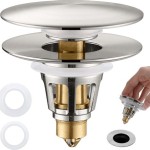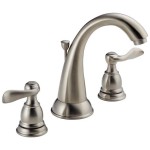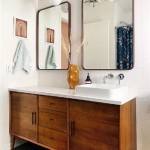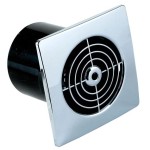RV Bathroom Sink Plumbing Parts: A Comprehensive Guide
Recreational vehicles (RVs) offer the freedom of travel and the convenience of having essential amenities on the road. A functional bathroom is a crucial part of this experience, and the sink is a vital component. The plumbing system within an RV bathroom sink is more compact and requires different considerations than residential plumbing. Understanding the various parts involved in RV bathroom sink plumbing is essential for maintenance, troubleshooting, and repairs.
This article details the various components of an RV bathroom sink plumbing system, explaining their function and offering insights into their specific requirements within the mobile environment of an RV.
Key Components of an RV Bathroom Sink Plumbing System
The RV bathroom sink plumbing system, while seemingly basic, comprises several critical components that work together to deliver water to the sink and drain wastewater safely. These components include the faucet, drain assembly, P-trap, water supply lines, and the grey water tank connection.
Faucet: The faucet is the point of control for water flow to the sink. RV faucets are designed to be lightweight and compact, often featuring single-handle or dual-handle designs. They should be durable and water-efficient, given the limited water capacity often found in RVs. Material considerations include chrome-plated brass, plastic, or a combination thereof. Chrome-plated brass provides durability and a classic look, while plastic options are lighter and more cost-effective. Installation requires careful attention to ensure a watertight seal with the sink basin and proper connection to the water supply lines.
Drain Assembly: The drain assembly is responsible for channeling water from the sink basin to the P-trap. This assembly typically includes a sink strainer, a drain flange, and a tailpiece. The sink strainer prevents debris from entering the plumbing system and causing clogs. The drain flange connects the strainer to the underside of the sink basin, and the tailpiece extends downward from the flange to connect to the P-trap. Like the faucet, the drain assembly is often made of plastic or metal. A crucial element of the drain assembly is the rubber or silicone washer between the sink basin and drain flange. This washer ensures a watertight seal preventing leaks. Regular cleaning of the strainer is recommended to prevent blockages.
P-Trap: The P-trap is a curved pipe designed to hold a small amount of water, creating a seal that prevents sewer gases from entering the RV. This is a critical component for maintaining a sanitary and odor-free environment inside the RV. The P-trap is typically made of PVC or ABS plastic and is connected to the drain assembly tailpiece and the drain line leading to the grey water tank. Proper installation and maintenance of the P-trap are vital. If the RV is not used for extended periods, the water in the P-trap can evaporate, allowing sewer gases to enter the RV. To prevent this, pouring water, preferably with a small amount of mineral oil, into the drain before storing the RV will help maintain the water seal.
Water Supply Lines: Water supply lines carry both hot and cold water from the RV’s plumbing system to the faucet. These lines are typically made of flexible PEX tubing or braided stainless-steel hoses. PEX is a popular choice due to its flexibility, durability, and resistance to freezing. Braided stainless-steel hoses offer increased durability and resistance to kinks. The supply lines connect to the faucet using compression fittings or threaded connections. Ensuring proper connections is essential to prevent leaks. Regular inspection of the supply lines is recommended to check for any signs of wear or damage, such as cracks or kinks.
Grey Water Tank Connection: The final component of the RV bathroom sink plumbing system is the drain line that connects the P-trap to the RV's grey water tank. This drain line is typically made of PVC or ABS plastic and is designed to transport wastewater safely to the tank. The connection to the grey water tank should be secure and watertight to prevent leaks and spills. Regular cleaning of the grey water tank is essential to prevent the build-up of odors and solids. Using RV-specific tank treatments can help break down waste and control odors.
Specific Considerations for RV Plumbing
RV plumbing systems differ from residential plumbing in several key areas. They are more compact, must be able to withstand the vibrations and movements associated with travel, and are often subject to freezing temperatures. These factors necessitate specific design considerations and maintenance practices.
Space Constraints: RV bathrooms are typically small, which means that plumbing components must be compact and efficiently arranged. This often leads to the use of smaller diameter pipes and fittings, as well as more compact drain assemblies. The layout of the plumbing system must also be carefully planned to maximize space and minimize the risk of leaks. Accessibility for maintenance and repairs is also a key consideration.
Vibration and Movement: RVs are subject to constant vibration and movement during travel, which can put stress on plumbing connections. This requires the use of durable materials and secure connections. Flexible supply lines are preferred over rigid pipes, as they can better absorb vibrations and prevent stress fractures. All connections should be properly tightened and inspected regularly to ensure they remain secure. Using pipe clamps and supports to secure plumbing lines can also help reduce the risk of leaks.
Freezing Temperatures: RVs are often used in cold climates, where plumbing systems are susceptible to freezing. Water expands when it freezes, which can cause pipes to burst and fittings to crack. To prevent freezing, it is essential to winterize the RV plumbing system before temperatures drop below freezing. This involves draining all water from the system, including the water heater, fresh water tank, and grey water tank. Antifreeze can also be added to the plumbing system to provide additional protection against freezing. Insulating exposed pipes and fittings can also help prevent freezing. During periods of extremely cold weather, keeping a small heater running inside the RV can also help maintain a safe temperature.
Troubleshooting Common RV Bathroom Sink Plumbing Issues
Like any plumbing system, RV bathroom sinks can experience a variety of problems, including leaks, clogs, and foul odors. Understanding the common causes of these issues and how to troubleshoot them will help maintain a functional and sanitary RV bathroom.
Leaks: Leaks are a common problem in RV plumbing systems, often occurring at connections between pipes, fittings, and fixtures. Common causes of leaks include loose connections, worn-out washers, and cracked pipes. To troubleshoot a leak, first identify the source of the leak by carefully inspecting all connections and components. Tighten any loose connections and replace any worn-out washers or O-rings. If a pipe is cracked, it will need to be repaired or replaced. Using Teflon tape or pipe sealant on threaded connections can help prevent leaks. Regularly inspecting the plumbing system for signs of leaks can help catch problems early before they become more severe.
Clogs: Clogs can occur in the sink drain, P-trap, or drain line. Common causes of clogs include hair, soap scum, and food particles. To clear a clog, start by removing the sink strainer and cleaning any debris that may be trapped there. If the clog is further down the drain, try using a plunger to dislodge it. If a plunger is not effective, try using a drain snake to break up the clog. Chemical drain cleaners can also be used, but it is important to use them with caution, as they can damage plumbing components. In severe cases, it may be necessary to disassemble the drain assembly or P-trap to remove the clog manually. Preventing clogs by regularly cleaning the sink strainer and flushing the drain with hot water can help keep the plumbing system clear.
Foul Odors: Foul odors emanating from the sink drain are often caused by the build-up of bacteria and organic matter in the P-trap or grey water tank. To eliminate odors, start by cleaning the P-trap with a mixture of hot water and baking soda. Flushing the drain with vinegar can also help neutralize odors. Regularly cleaning the grey water tank with RV-specific tank treatments can help break down waste and control odors. Ensuring that the P-trap is properly filled with water can also help prevent sewer gases from entering the RV. If the odors persist, it may be necessary to inspect the vent pipe for any blockages that could be preventing proper ventilation.
Selecting the Right Plumbing Parts for RV Bathrooms
Choosing the right RV plumbing parts is essential for ensuring a reliable and long-lasting system. Several factors should be considered when selecting plumbing components, including material, size, and compatibility. High-quality parts may cost more upfront, but they offer greater durability and require less frequent replacement. Understanding these factors will aid in making informed decisions when purchasing replacement or upgrade components.
Material: Plumbing parts are available in various materials, including plastic, brass, and stainless steel. Plastic parts are lightweight and cost-effective but may not be as durable as metal parts. Brass parts are durable and resistant to corrosion but can be more expensive. Stainless steel parts offer the best combination of durability and corrosion resistance but are typically the most expensive. The choice of material depends on the specific application and budget. For example, plastic drain assemblies are often used in RV bathrooms due to their low cost and light weight, while brass or stainless-steel faucets are preferred for their durability and aesthetics.
Size: It is crucial to select plumbing parts that are the correct size for the existing plumbing system. Using the wrong size parts can lead to leaks and other problems. When replacing pipes or fittings, it is important to measure the diameter of the existing parts to ensure a proper fit. Similarly, when replacing faucets or drain assemblies, it is important to check the dimensions of the sink basin and countertop to ensure compatibility. Consulting with a plumbing professional can help ensure that the correct size parts are selected.
Compatibility: When replacing plumbing parts, it is important to ensure that the new parts are compatible with the existing plumbing system. This includes checking the thread type and size of connections, as well as the material of the pipes and fittings. Mixing incompatible materials can lead to corrosion and leaks. For example, using brass fittings with aluminum pipes can cause galvanic corrosion. When in doubt, it is best to consult with a plumbing professional to ensure compatibility.

20 Bathroom Sink Drain Parts How They Works Stopper Plumbing

Rv Water Plumbing Diagram

Mobile Home Plumbing And Repair Parts Danco

Flexible Drainage Pipe Universal Bathroom Plumbing P Trap Tubing Kitchen Sink Drain Kit Tube S For Rv Temu Germany

Buy Plumbing Fixtures S For Rv Part

How To Fix Rv Water Supply Lines Plumbing Tips

Easy Rv Bathroom Sink Faucet Replacement

Bad Smell Coming From Under The Rv Sink

The Plumber S Choice 1 7 8 In 2 4 Flat Stainless Steel Rv Mobile Shower Strainer Drain Assembly For Bar Sinks Ess1757 Home Depot

Rv Bathroom Faucet Dual Teacup Handle Brushed Nickel Patrick Distribution Faucets 277 000087 Kitchen
Related Posts







